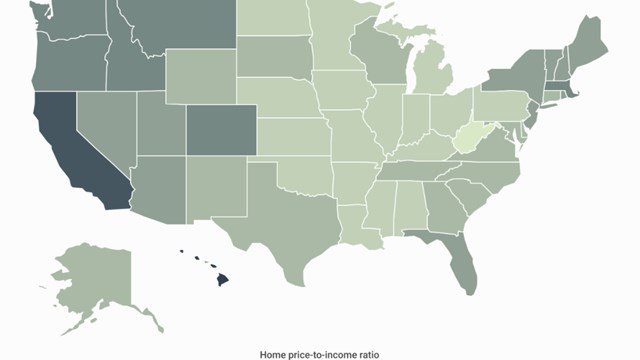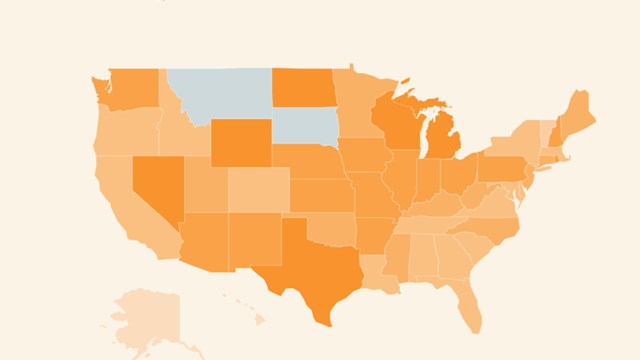Manhattan’s residential co-op and condominium market ended 2018 on a down note, a change from the more stable picture it displayed in 2017, according to Corcoran’s 2018 fourth quarter report.
“Market-wide closed sales declined as potential buyers grappled with a confluence of factors that created uncertainty in the market,” said the study. “Buyers’ concerns included rising mortgage interest rates, tax-law reform, volatility in the financial markets, foreign capital restrictions, and political distractions. As a consequence, many prospective buyers are choosing to wait on the sidelines until prices adjust to a more accessible level and other market factors calm.”
Buyer’s Market
The good news in the study is the condominium resale market. According to Corcoran’s report, the median price for Manhattan condo resales of $1.350 million remained unchanged over fourth quarter 2017, but strangely the median price per square-foot decreased from $1,443 to $1,428 – approximately 2 percent year-over-year. This discrepancy is attributed to the fact that “a greater number of resale condo sales occurred within historically less expensive and older condominiums versus the same time period last year,” said the report.
The median price for Manhattan co-op resales showed similar results. A positive change of 2 percent over fourth quarter 2017 was indicated, but there was a drop in median price for co-op resales from $845,000 to $810,000, representing a 4 percent decline from third quarter 2018 to fourth quarter 2018, for reasons similar as explained above for condominium sales. According to Corcoran, average co-op resale price mirrored the decline. Price figures responded to fewer sales in lower-cost neighborhoods as well as buyers returning to the resale co-op market in search of value.”
“If things are priced correctly, they sell,” says Julie Leedes Bienstock, a broker with Halstead. “It’s taken a while for sellers to get on board with the fact that the market has changed. If priced correctly and it’s good product, it moves. Buyers in this market are motivated by value, and value doesn’t mean discount. It means the space gives them what they’re looking for, without doing a ton of work. There’s also no urgency right now.” That lack of urgency may be what’s behind the increase in days on market of approximately 6 percent over 2017.
Inventory Indicator
Perhaps the most significant changes in the market are in inventory. Market-wide, the overall number of units available increased by 10 percent since fourth quarter 2017. Inventory in the co-op resale market is up 17 percent, and 6 percent for resale of condo units. “Although fourth quarter inventory hasn’t been this high since 2011,” says Corcoran, “this quarter’s figure was still 31 percent lower than the fourth quarter peak reached in 2008.”
Brokers and other professionals view this discrepancy between the increase in inventory between co-op and condo units as a result of several factors. First of all, condos tend to sell and close more quickly than co-ops, as there’s no board approval required. Additionally, as Leedes Bienstock explains, while having a lower price generally, co-ops require more cash and liquidity from the buyer upfront. That generally leads to a longer period on the market. Overall, the inventory of co-ops in absolute terms always outpaces condos because they stay on the market longer.
Bo Poulsen, also a broker with Halstead, adds that “economic uncertainty was a major factor” in the change in the market over the past year. “2018 really started in 2017,” he says. "A lot of inventory came onto the market at that time. Overbuilding in the luxury market generated a lot of the problem. The slight improvement we’ve seen in the fourth quarter over the rest of 2018 is attributable to a slight decline in mortgage interest rates, and sellers becoming more realistic. Despite the market, people have to go on with their lives. Now people are seeing opportunity and acting on it.”
Neighborhood Differences
From a neighborhood perspective, comparisons are all over the board. The Upper West Side had the largest decrease in total sales and median sales price, while the Upper East Side had the highest increase in average price per square-foot differentially. Downtown experienced no change in sales volume. Midtown had the highest decrease in median price per square-foot. Upper Manhattan showed mixed results, with positive movement in Washington Heights and declines in Harlem. Inventory rose in all sectors.
In this new reality, Larry Lubin, a broker with Klara Madlin Real Estate in Manhattan, advises sellers to “price things right. If buyers get a sense that things are even slightly overpriced, they will simply walk out; they won’t even make a low-ball offer. We had a listing on the Upper West Side, and the seller needed to get out, so we under-priced the apartment a little bit. That resulted in a bidding war, and ultimately we got a little more than we expected.”
Markets change; In prior years it was the seller’s market. As Leedes Bienstock describes it, “sellers expected to sell in a bidding war in five minutes,” but that's not necessarily the case, and “buyers are feeling their oats and their demeanor has changed.” Markets swing back and forth. Watch this space over the coming weeks for the pros' predictions on what 2019 will bring.
AJ Sidransky is a staff writer at The Cooperator, and a published novelist.







Leave a Comment